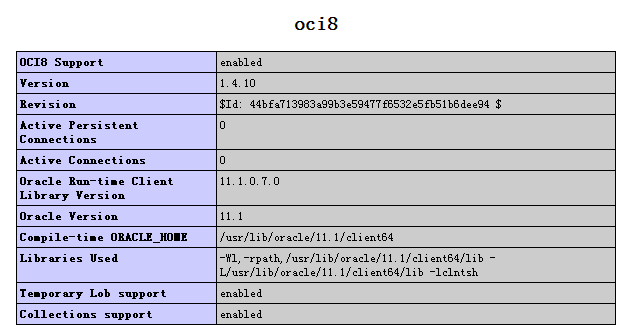|
|
在一些微博網(wǎng)站上我們經(jīng)常可以看到這樣的應(yīng)用,微博內(nèi)容列表上并沒有使用分頁條,而是一次加載一定數(shù)量的記錄顯示在列表頁,當(dāng)用戶瀏覽到列表頁底部時(shí),可以通過單擊“查看更多”來加載更多記錄。本文將結(jié)合jQuery和php給大家講述如何實(shí)現(xiàn)這種功能。
Ajax加載的基本原理:當(dāng)頁面載入時(shí),jQuery向后臺(tái)請(qǐng)求數(shù)據(jù),php通過查詢數(shù)據(jù)庫(kù)將最新的幾條記錄顯示在列表頁,在列表頁的底部有個(gè)“查看更多”的鏈接,通過觸發(fā)該鏈接,向服務(wù)端發(fā)送Ajax請(qǐng)求,后臺(tái)php程序得到請(qǐng)求參數(shù),并作出響應(yīng),獲取數(shù)據(jù)庫(kù)相應(yīng)的記錄并以JSON的形式返回給前臺(tái)頁面,前臺(tái)頁面jQuery解析JSON數(shù)據(jù),并將數(shù)據(jù)追加到列表頁。其實(shí)就是Ajax分頁效果。
首先要引入jquery庫(kù)和jquery.more.js插件,jquery.more.js已經(jīng)將許多功能都封裝好了,并提供了參數(shù)配置的功能。
<script type="text/Javascript" src="jquery.js"></script> <script type="text/Javascript" src="jquery.more.js"></script>
xhtml結(jié)構(gòu)如下:
<div id="more"> <div class="single_item"> <div class="element_head"> <div class="date"></div> <div class="author"></div> </div> <div class="content"></div> </div> <a href="Javascript:;" class="get_more">::點(diǎn)擊加載更多內(nèi)容::</a> </div>
需要指出的是,樣式single_item,get_more是和jquery.more.js插件關(guān)聯(lián)的,你也可以取另外的class名字,但是在配置的時(shí)候一定要將對(duì)應(yīng)的class寫上。
CSS樣式如下:
#more{margin:10px auto;width: 560px; border: 1px solid #999;} .single_item{padding: 20px; border-bottom: 1px dotted #d3d3d3;} .author{position: absolute; left: 0px; font-weight:bold; color:#39f} .date{position: absolute; right: 0px; color:#999} .content{line-height:20px; word-break: break-all;} .element_head{width: 100%; position: relative; height: 20px;} .get_more{margin:10px; text-align:center} .more_loader_spinner{width:20px; height:20px; margin:10px auto; background: url(loader.gif) no-repeat;}以上CSS是本例中定制的,當(dāng)然,大家可以在實(shí)際項(xiàng)目中定制不同的樣式。注意,more_loader_spinner是定義加載動(dòng)畫圖片的。
jQuery部分如下:
$(function(){ $('#more').more({'address': 'data.php'}) });使用很簡(jiǎn)單,配置了后臺(tái)地址:data.php,來看data.php是怎么處理數(shù)據(jù)的。
php部分:
data.php文件:
鏈接數(shù)據(jù)庫(kù):
require_once('connect.php'); $last = $_POST['last']; $amount = $_POST['amount']; $user = array('demo1','demo2','demo3','demo3','demo4'); $query=mysql_query("select * from say order by id desc limit $last,$amount"); while ($row=mysql_fetch_array($query)) { $sayList[] = array( 'content'=>$row['content'], 'author'=>$user[$row['userid']], 'date'=>date('m-d H:i',$row['addtime']) ); } echo json_encode($sayList);data.php接收前臺(tái)頁面提交過來的兩個(gè)參數(shù),$_POST['last']即開始記錄數(shù),$_POST['amount']即單次顯示記錄數(shù),看SQL語句就明白,其實(shí)就是分頁中用到的語句。
然后將查詢的結(jié)果以JSON格式輸出,php的任務(wù)就完成了。
最后來看下jquery.more.js的參數(shù)配置:
'amount' : '10', //每次顯示記錄數(shù) 'address' : 'comments.php', //請(qǐng)求后臺(tái)的地址 'format' : 'json', //數(shù)據(jù)傳輸格式 'template' : '.single_item', //html記錄DIV的class屬性 'trigger' : '.get_more', //觸發(fā)加載更多記錄的class屬性 'scroll' : 'false', //是否支持滾動(dòng)觸發(fā)加載 'offset' : '100', //滾動(dòng)觸發(fā)加載時(shí)的偏移量
php技術(shù):jQuery+PHP+ajax實(shí)現(xiàn)微博加載更多內(nèi)容列表功能,轉(zhuǎn)載需保留來源!
鄭重聲明:本文版權(quán)歸原作者所有,轉(zhuǎn)載文章僅為傳播更多信息之目的,如作者信息標(biāo)記有誤,請(qǐng)第一時(shí)間聯(lián)系我們修改或刪除,多謝。



